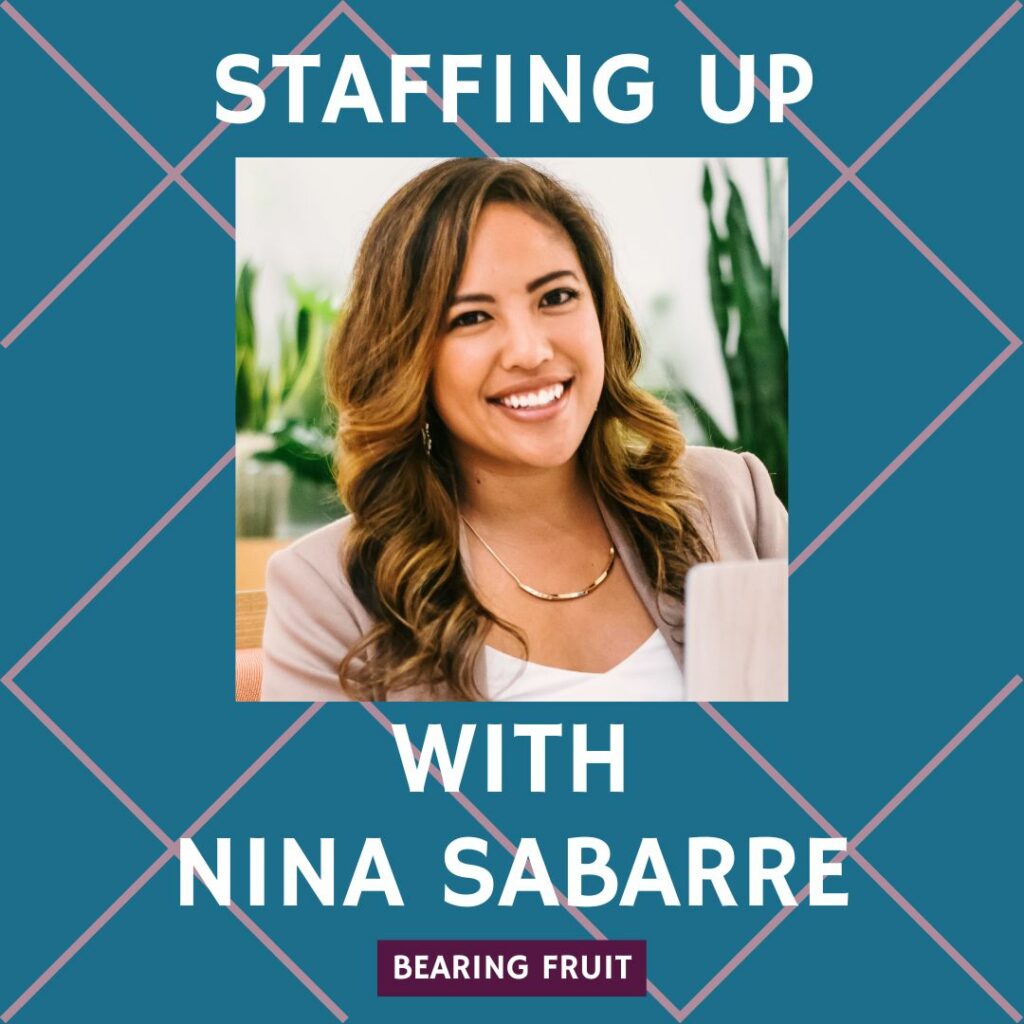Your First Hire
Hiring your first person is scary.
How will I bring in enough money to pay for them?
What if I have a lapse in contracts? How will I cover their salary?
What work would I give them? I like having my hands in all aspects of my projects.
Do I have to supervise? How does one actually manage?
What if they do something dumb and wreck my business?
It’s going to take me forever to train them and I don’t have that spare time.
What if I become reliant on them and they leave?
Then these worries link hands and dance in a circle in your brain and you push off hiring yet again.
At this point in my career, I’ve gone through seasons of hiring a bunch of staff and times when I scale back drastically.
Throughout, Komani Lundquist Cedano has been my go-to resource for growing and shrinking your team with ethics and heart. She’s a co-owner at Via Evaluation and has largely been responsible for Human Resources including hiring and managing staff. Like, the things that scare most of us about hiring and managing? That’s her full-time job.
Let’s pick her brain, shall we?
When to Hire
Stephanie: Most solo practitioners who eventually hire someone will say that they wish they’d done it sooner. So what kind of metrics should we be looking at to help us determine when to hire someone?
Komani: I suggest using an Eisenhower matrix. Draw a simple 4-cell table and fill it with the following:
1. what you’re good at
2. what you’re not good at
3. what you enjoy doing
4. what you don’t enjoy doing
Use this Eisenhower matrix to determine how much is in the ‘not good at’ or ‘don’t like’ – these items are the things to delegate.
Then, create an estimated employee budget (total estimated cost) of an employee to do the job you believe will best aid you in your growing business. Knowing this estimated total cost helps you set a baseline for the revenue you need to bring in to support them.
This cost should include expenses like their salary, benefits, and equipment, but also factor in the time spent managing them (instead of doing project work yourself) and related administrative costs. An old framework I heard about 15 years ago was $125k of revenue per employee. I suggest using a minimum revenue target of 2x their base salary or 1.5x their total estimated cost.
Then, determine a future revenue projection. You should know what you made in the past year, which can serve as your baseline, and then write up a list of what you currently have or expect to have in revenue for the coming year. This analysis will give you the information needed to determine if your revenue will cover both you and your new staff member.
Also, make sure you’ve exhausted outsourcing your other resources, such as your professional bench of an accountant or bookkeeper, lawyer, business coach, and financial advisor. Ensure you’ve maxed out the capacity of folks you’ve contracted to support your work.
Employee or Contractor?
Stephanie: I’ve only ever worked with contractors to fulfill the various roles in my company. When do you advise taking on employees versus working with a bench of contractors?
Komani: Taking on employees, versus contractors, should be a strategic, practical, or ethical decision.
Strategic: If you’re planning on having more than one employee (eventually). The return on investment is there to build the systems employees require. Or, based on your Eisenhower Matrix, you see that there’s a clear, full-time role you need to have someone else do.
Practical: You’re swamped and cannot complete work, or are already effectively using a single subcontractor nearly full-time. This is a clear indicator that they really should be an employee.
Depending on which US state you are in, you may be required to make this person a W-2 employee. This might also apply to having an intern that you realize you want to keep.
Ethical: You care about equity and see that employing folks and providing them access to a place to do work (an office), health insurance, paid time off, and other benefits is actually about equity. Not everyone can/is able/has access to be able to set up their own business/work from their house/pay for their own health insurance/manage the wild world of taxes/negotiate contracts.
Employers are required to provide many things for your employees, where contractors are really on their own. Second to this, it’s an ethical concern to ensure you can keep your promises to your clients – be reliable – even if an emergency arises.
When to Hire a People Manager
Stephanie: Say you’re one of those entrepreneurs that loves to do the actual work and, while you want assistance via contractors or employees, you don’t want your role to shift entirely to managing them. At what point do you need to hire someone to manage your employees? It seems like this type of hire would be a big step in organizational complexity.
Komani: Ultimately, knowing your own highest and best use (as a visionary? meeting with clients? writing reports?) is key. Recognize that you can choose what that is as you grow in your business. Your role in your organization will shift if you intend to bring employees in, and getting a manager will help, but won’t take away the burden.
When you make your first hires, seek folks who are great at taking high-level direction and can run with your ideas and plans. As your organization grows, you’ll find the need to bring in people with a greater variety of skill sets and increased specialization. You will need more guidance and structure for them, which is something a manager can help with.
Often, organizations get (or promote someone to) a middle-type manager after the first three employees. Someone who enjoys creating systems and processes and ensuring quality work products.
Three employees isn’t a hard and fast rule, but it’s often when I see small business owners struggling – keeping up with project oversight, business development, administration, and management of employees. This seems to be a challenge spot and time for a greater strategic move, which could be the hire of a manager.
It’s a big step in organizational complexity, and I suggest each entrepreneur know and be able to share what their organization’s overarching strategy (short and long term goals) and values are to help guide a manager.
With these elements in place, and a good deal of trust, and an ability to let go, someone else can help create a great structure for your growing team.
Reader, Stephanie is back. Isn’t it so helpful to get this kind of insight? Good news: Komani teaches an entire guest lesson on hiring and managing staff inside my Boost & Bloom course.
Even with Komani’s guidance, it’s still gonna be a bit scary to grow. It’ll be so much easier if you can run your thoughts and plans by a group of fellow founders. We’ve got your back.
 Today is your last chance to enroll in Boost & Bloom, the course for calm entrepreneurs!
Today is your last chance to enroll in Boost & Bloom, the course for calm entrepreneurs!

